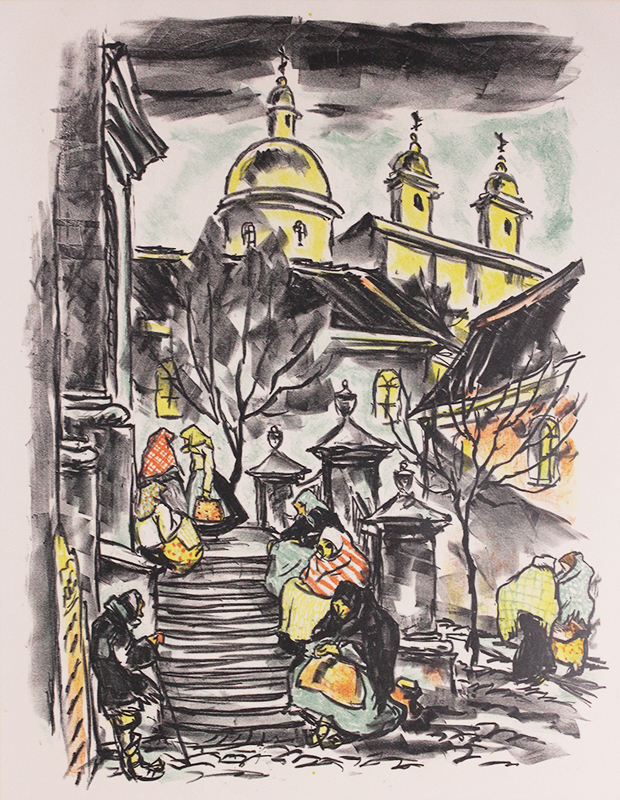
19th, 20th & 21st Century Fine Prints
707-546-7352 · fax 707-546-7924 · web: www.annexgalleries.com · email: artannex@aol.com
Beggars on the Stairs of St. Theresa Church (a.k.a. Aus Russisch Polen) by Walter Buhe

Beggars on the Stairs of St. Theresa Church (a.k.a. Aus Russisch Polen)
Walter Buhe
Beggars on the Stairs of St. Theresa Church (a.k.a. Aus Russisch Polen)
Walter Buhe
1882 - 1958 (biography)In the early 1920s painter and printmaker Walter Buhe had established himself as a graphic artist and illustrator, but study trips with his students to a variety of Eastern European countries inspired him to explore new, freer techniques, and his style inclined more toward Expressionism. He was especially interested in rural cultures and daily life, and in “Aus Russisch Polen” (From Russian Poland), he depicts an afternoon in a Polish town, where people wait on the steps of an official building under a wintery sky. This piece appears to be transitional for the artist, combining his graphic art sensibilities with his desire to break free of their confines. He uses the side of his litho crayon to draw on the stone, disallowing fussy preciseness, and he keeps the palette limited. The effect is sketch-like and appealing in its sense of spontaneity, capturing the mood of the moment.


